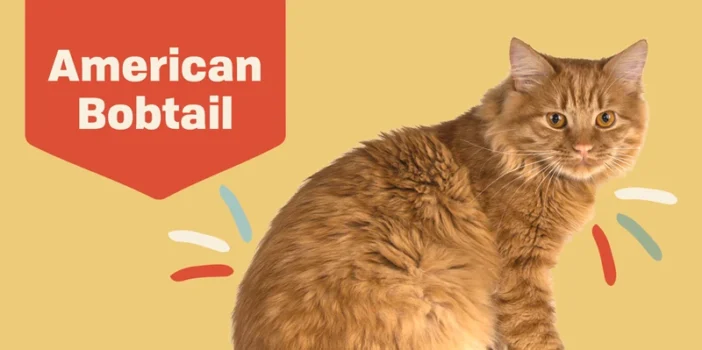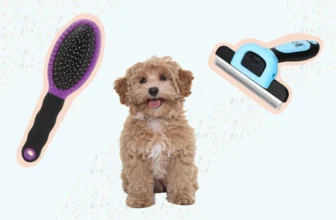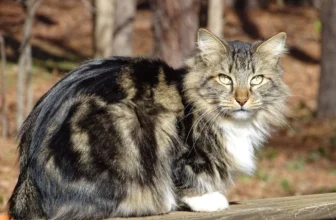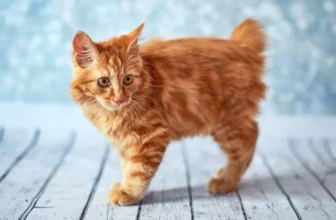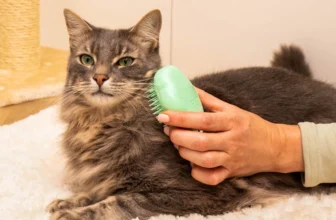As cat owners, we understand how important it is to take care of our furry friends. However, there are times when we may not know how to handle certain health issues, especially when it comes to their nails. American Bobtail cats, like all cats, require proper nail care to keep them healthy and happy. Nail problems can occur due to various factors such as improper grooming or even genetics. It can be a perplexing situation for pet owners who do not have the necessary knowledge. In this article, we will discuss common nail problems in American Bobtail cats and guide you through step-by-step on how to treat and prevent these issues. Let’s dive into the world of cat claws and find out how to keep them in tip-top shape.
Understanding the Anatomy of American Bobtail’s Claws
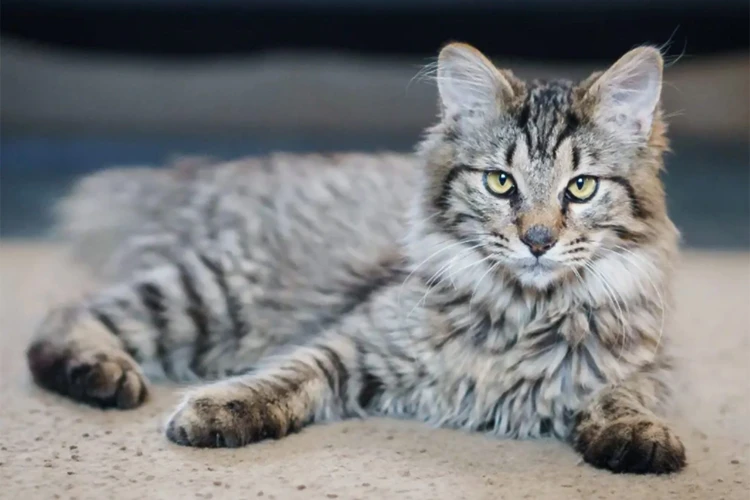
Have you ever wondered why cats are such avid scratchers? Scratching is a natural instinct for all felines, including the American Bobtail. Their claws play a vital role in their everyday lives, from hunting prey to defending themselves against predators. However, it’s important to understand the anatomy of your American Bobtail’s claws to properly care for them and prevent any potential nail problems. Let’s explore the intricate structures of cat claws and specifically the anatomy of American Bobtail’s claws. Understanding this will enable you to provide the best possible care for your furry friend’s paws. To learn more about how to trim your cat’s nails, you can check out our guide on nail trimming for American Bobtail cats.
Knowing the Anatomy of Cat Claws
Understanding the anatomy of cat claws is crucial for properly taking care of your American Bobtail’s nails. A cat’s claws are made up of the outer covering, which is called the sheath, and the inner part called the quick. The sheath is a hard protective covering that encases the more sensitive quick.
The quick is where the blood vessels and nerves are located. It is essential to be aware of the quick since cutting it while trimming your American Bobtail’s nails can cause pain and bleeding. Similarly, the quick can get infected, leading to discomfort and eventually damaging the nail.
The sheath covers the quick and serves as a protective layer for the underlying bone. As the American Bobtail uses its nails for various activities, such as scratching and climbing, the sheath can wear out, making the quick visible.
To keep your American Bobtail’s claws in good condition, it is vital to understand that the claws need regular trimming. Providing your cat with scratching posts or pads can help keep their claws in good shape by stimulating normal shedding and growth of new claws.
Understanding the anatomy of the American Bobtail’s claws can also help you quickly identify nail problems. Common nail issues include brittle, overgrown, infected, ingrown, and split claws. Knowing how to identify these issues can help you deal with them early on. For instance, overgrown claws are easy to spot since they are longer than other nails. You can visit /nail-trimming-american-bobtail-cat/ to learn more about how to trim your American Bobtail’s overgrown nails.
Anatomy of American Bobtail Claws
The claws of an American Bobtail are an essential part of their anatomy that help them with a myriad of activities. These include hunting, climbing, and self-defense. In terms of structure, the claws are made up of the nail, quick, and the pad. The American Bobtail’s claws, like those of any other cat breed, are retractable, which means they can be stretched out or pulled in depending on the situation.
The nails of American Bobtails are made up of a hard protein called keratin. The outer part of the nail is referred to as the nail cap or shell, while the inner part is known as the pulp. The nail cap is the visible part of the nail that protrudes beyond the end of the toe. It is also the part that becomes sharp and jagged when not adequately trimmed.
The quick of the nail, which is a blood vessel and nerve, is located beneath the nail cap. It is essential to be careful not to cut the quick when trimming the American Bobtail’s nails, as it can result in bleeding, pain, and discomfort for your feline friend.
Lastly, the pad of the paw is the soft cushion-like structure located directly beneath the nail. It provides support and helps to distribute weight evenly when walking or running.
Proper care and maintenance of your American Bobtail’s claws are necessary to prevent common nail problems such as brittle, overgrown, infected, ingrown, and split nails. Regular nail trimming is a particularly crucial aspect of American Bobtail grooming. To learn more about how to trim your American Bobtail’s nails appropriately, check out our article on American Bobtail Cat Nail Cut.
Common Nail Problems in American Bobtail Cats
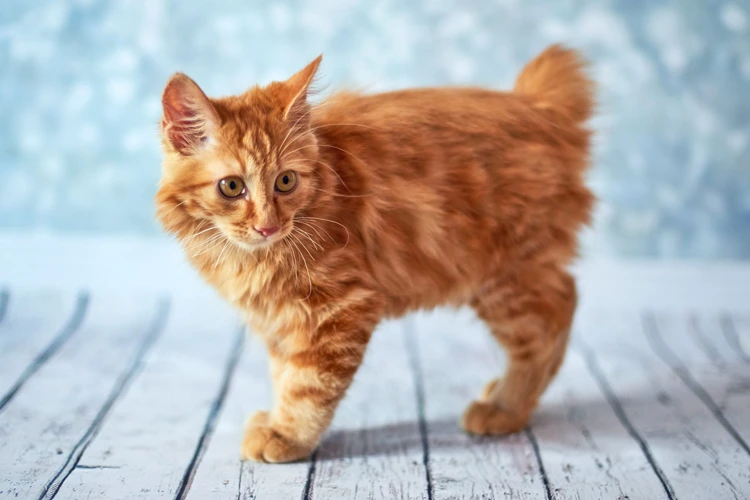
As a responsible American Bobtail cat owner, it’s important to keep an eye on your feline friend’s claws. Though cats are independent creatures that tend to care for themselves, their nails can encounter various issues that require human intervention. In this section of the article, we will delve into the most common nail problems that American Bobtail cats may face, and provide step-by-step solutions to treat and prevent them. From brittle claws to infected nails, we’ve got you covered. So, let’s get started and learn how to keep your American Bobtail’s nails healthy and strong. And if you need more information on nail trimming for your furry friend, make sure to check out our detailed guide on nail trimming American Bobtail cats.
Brittle Claws
Brittle claws are a common nail problem in American Bobtail cats, and this can lead to several issues. Brittle claws can break or split easily, causing pain and discomfort to your furry friend. There are several reasons why your cat may have brittle claws, including poor nutrition, lack of moisture, or the use of certain medications.
Signs of Brittle Claws
If you notice that your cat’s claws are breaking or splitting easily, this could be a sign of brittle claws. Other signs include:
- Discoloration or yellowing of the nails
- Cracks or chips on the surface of the nails
- Difficulty retracting claws
Treatment for Brittle Claws
If your American Bobtail is suffering from brittle claws, there are several steps you can take to treat the issue. Here are some effective treatments:
| Treatment | Description |
|---|---|
| Proper Nutrition | Make sure your cat is eating a balanced and nutritious diet that includes plenty of vitamins and minerals. This will help to strengthen the claws and reduce brittleness. Look for high-quality cat food that contains biotin, zinc, and omega-3 fatty acids. |
| Add Moisture | Brittle claws can be a result of a lack of moisture. To combat this, you can add a humidifier to your living space, or incorporate wet food into your cat’s diet. You can also apply paw balm to the paw pads to keep them moisturized. |
| Trimming | Regular trimming is important to maintain healthy nails. However, when dealing with brittle claws, it’s important to use caution. Be sure to use sharp, high-quality clippers and avoid cutting too close to the quick. Check out our guide to nail trimming your American Bobtail for more tips. |
| Supplements | There are supplements available that can help to strengthen the nails. Look for supplements containing biotin, which has been shown to improve nail strength. |
Prevention
The best way to prevent brittle claws is through proper grooming and nutrition. Make sure your cat is eating a balanced diet and is getting plenty of moisture. Regular grooming will also help to keep the nails healthy and strong. Consider providing your American Bobtail with a scratching post or pad to help them keep their nails trimmed naturally. Check out our guide to Bobtail cat nail trimming for more information on keeping your cat’s nails healthy.
By taking these steps, you can help prevent and treat brittle claws in your American Bobtail cat. Remember to always monitor your cat’s nails for signs of trouble, and consult with your veterinarian if you notice any issues.
Overgrown Claws
One of the most common nail problems in American Bobtail cats is overgrown claws. This can be caused by a variety of factors, such as lack of exercise, improper trimming, or even certain medical conditions. Overgrown claws can lead to discomfort, pain, and even difficulty walking for your furry friend. To address this issue, here are some steps you can take:
1. Observe your cat’s behavior: You might notice your cat having difficulty walking or even standing due to their overgrown claws. They may also appear to be in pain or discomfort, or you may hear their claws clicking on the floor as they walk.
2. Trim your cat’s claws: Trimming your cat’s claws regularly can help prevent overgrowth. Use pet-specific nail clippers to trim the claws, being careful not to cut too close to the quick. If you’re not comfortable with trimming your cat’s claws yourself, you can also take them to a professional groomer or veterinarian.
3. Increase your cat’s exercise: Encouraging your cat to play and exercise can help naturally file down their claws. Provide them with toys to play with and engage in interactive play with them, such as using a laser pointer or feather toys.
4. Check for underlying medical conditions: Sometimes overgrown claws can be a symptom of an underlying medical condition, such as arthritis. If you notice your cat’s claws continue to overgrow despite regular trimming and exercise, it may be worth taking them to the vet for a check-up.
Addressing overgrown claws in your American Bobtail cat requires a combination of regular maintenance, exercise, and proper care. By following these steps, you can ensure your furry friend stays happy and healthy.
Infected Claws
Infected claws in American Bobtail cats can be a painful experience for both you and your pet. Some of the common symptoms of infected claws include redness, swelling, pain, and discharge. Here are some possible causes of infected claws:
- Bacterial or fungal infections
- Trauma
- Allergic reactions
- Foreign objects stuck in the claw
If you notice any of these symptoms, it is important to take immediate action. Ignoring an infected claw can cause the infection to spread to other parts of your cat’s body. The good news is, most infected claws can be treated with consistent care and attention.
First and foremost, you should take your cat to the veterinarian to receive proper diagnosis and treatment plan. Your veterinarian may suggest antibiotics or antifungal medication to clear up the infection, or they may prescribe pain medication to ease your cat’s discomfort.
In addition to veterinary care, there are several steps you can take at home to help your cat through the recovery process:
- Clean the affected paw daily with warm water and a mild antiseptic solution
- Apply a warm compress to the paw to help reduce swelling and pain
- Keep your cat’s nails trimmed to prevent further trauma or injury
- Make sure your cat does not excessively lick or bite the affected paw
It’s important to note that prevention is the best course of action for infected claws. By maintaining a regular grooming routine for your American Bobtail and keeping their environment clean, you can minimize the risk for infection. If you notice any changes in your cat’s behavior or physical appearance, take them to the veterinarian as soon as possible.
Ingrown Claws
Ingrown claws are a common problem that tends to affect American Bobtail cats. This problem occurs when the cat’s claws grow in a direction that is not normal, causing them to start digging into the paw pad or toe. This can be incredibly painful for the cat and can even lead to an infection. It is thus crucial to recognize the signs and symptoms of ingrown claws looking for quick solutions to resolve the problem.
The following table describes the common signs and symptoms of ingrown claws in American Bobtail Cats:
| Signs and Symptoms | Description |
| Paw Swelling | A cat with an ingrown claw may experience swelling on the affected paw, which may also become painful on touch. |
| Excessive Licking or Chewing of Paws | When an American Bobtail cat is feeling discomfort, they will often start licking or chewing on their affected paw, trying to relieve the pain. |
| Limping or Reluctance to Walk | An ingrown claw can cause your cat to limp or walk with a limp, as they try to avoid putting pressure on the affected paw, which can worsen the situation. |
If you notice any of these symptoms developing in your American Bobtail cat, it is essential to seek veterinary attention immediately. Trying to treat an ingrown claw at home can be uncomfortable and may even cause harm when done improperly.
There are a few tips that a veterinarian may recommend when dealing with an ingrown claw. In many cases, they may suggest trimming the claw, so it is not digging into the paw pad. Alternatively, antibiotics and anti-inflammatories may be prescribed for any resulting infections or to relieve inflammation.
It is also important to limit your cat’s movement to avoid further irritation to the affected paw. With proper treatment, your American Bobtail cat should recover from their ingrown claw without any long-term side effects.
Split Claws
Split claws are another common nail problem that American Bobtail cats can experience. This occurs when the claw splits in the middle, causing discomfort and pain for your furry friend. Some of the most common causes of split claws include trauma, injury, or accidents that put pressure on the claw. This can also happen due to dry weather conditions that can make their claws brittle and prone to splitting.
If you notice that your cat has a split claw, it’s important to address the issue quickly to prevent further damage and pain. Here are some steps you can take to help treat and heal your cat’s split claw:
- Step 1: Gently clean the affected area with warm water and mild soap, making sure to remove any dirt or debris that may be causing further irritation.
- Step 2: Apply an antiseptic ointment or powder to the affected area to promote healing and prevent infection. Be sure to choose a product that is specifically designed for cats, as some human products may be toxic for them.
- Step 3: Wrap the affected paw in a soft and clean cloth to protect it from further damage. This will also help keep your cat from licking or biting at the affected area, which can slow down the healing process.
- Step 4: Take your cat to the vet to have the split claw evaluated. Your vet may need to trim the damaged claw and administer antibiotics to prevent infection. In severe cases, they may need to remove the damaged claw altogether.
- Step 5: Prevent future split claws by keeping your cat’s claws properly trimmed and avoiding trauma or injuries to their paws. You can also consider giving them supplements that promote healthy and strong claws, like biotin or omega-3 fatty acids.
It’s important to keep a watchful eye on your cat’s paws and claws to prevent and address any nail problems before they become more serious. With proper care and attention, you can help keep your American Bobtail cat’s nails healthy and strong.
How to Treat Common Nail Problems in American Bobtail Cats
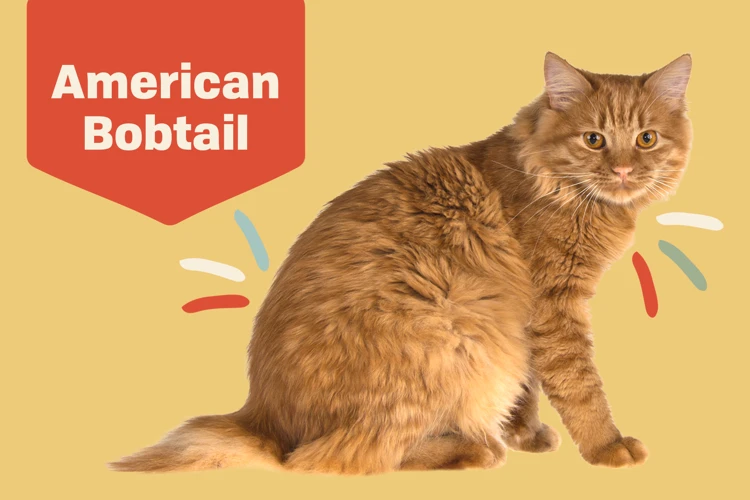
If your American Bobtail cat is experiencing nail problems, don’t fret! There are many ways to treat and manage the most common nail issues, such as brittle, overgrown, infected, ingrown, and split claws. In this section, we’ll explore some effective methods for treating these nail problems and restoring your cat’s paws to their healthy, happy state. With a little patience and some know-how, you can get your kitty feeling comfortable and playful again in no time. So read on to discover how you can help your furry friend feel their best!
Trimming Your Cat’s Nails
Trimming your American Bobtail’s nails may seem like a daunting task, but it is crucial for maintaining their health and preventing common nail problems. Here are some steps you can follow:
- Gather necessary supplies: Before you start trimming your cat’s nails, make sure you have all the supplies you need. This includes nail clippers specifically designed for cats, styptic powder (in case you accidentally cut the quick), and treats to reward your cat.
- Get your cat comfortable: Make sure your cat is in a calm and comfortable state before attempting to trim their nails. You can try petting and speaking softly to your cat to help ease any nervousness.
- Identify the quick: The quick is the pink part of your cat’s nail that contains blood vessels and nerves. It’s important to avoid cutting the quick while trimming your cat’s nails as it can cause pain and bleeding.
- Trim the tip: Using the cat nail clippers, carefully trim off the tip of each nail. Avoid cutting too close to the quick. If you’re unsure, it’s better to err on the side of caution and trim less.
- Reward your cat: After trimming your cat’s nails, reward them with a treat or praise. This helps create a positive association with nail trimming and makes them more cooperative in the future.
- Repeat regularly: To prevent overgrown nails, it’s important to trim your cat’s nails regularly. The frequency may depend on your cat’s individual needs, but a good rule of thumb is to trim them every 2-4 weeks.
Remember, if you’re unsure or uncomfortable with trimming your cat’s nails yourself, you can always seek the help of a professional groomer or veterinarian. By taking care of your American Bobtail’s nails, you can help prevent common nail problems and ensure their overall health and happiness.
How to Deal with Brittle Nails
Brittle nails are a common problem in American Bobtail cats. Although they may seem like a minor issue, they can be quite uncomfortable for your feline friend. Thankfully, there are several steps you can take to deal with brittle nails.
Step 1: Adjust the Diet
One of the main reasons why cats develop brittle nails is due to a lack of proper nutrition. Make sure that your cat is getting enough vitamins and minerals such as biotin, zinc, and omega-3 fatty acids. You can find these nutrients in commercial cat food or consider adding supplements to your cat’s diet after consulting with your veterinarian.
Using an HTML table would be a good way to display a list of foods that are rich in these nutrients.
| Nutrient | Food Sources |
|---|---|
| Biotin | Eggs, liver, kidney, and yogurt |
| Zinc | Beef, pork, chicken, oysters, and chickpeas |
| Omega-3 Fatty Acids | Sardines, salmon, tuna, and flaxseed oil |
Step 2: Use a Moisturizer
Another effective way to deal with brittle nails in American Bobtail cats is by using a moisturizer. Applying vitamin E oil to your cat’s nails can help to keep them from becoming too dry and brittle. You can also use petroleum jelly or a special paw balm that is specifically formulated for cats.
Step 3: Trim the Nails Regularly
Trimming your cat’s nails on a regular basis can also help to prevent them from becoming brittle. Use a high-quality nail trimmer to carefully cut off the tip of each claw. Be sure to avoid cutting the quick, which is the pink part of the nail that contains blood vessels. If you’re uncomfortable trimming your cat’s nails, you can always take them to a professional groomer or veterinarian.
By following these simple steps, you can help to keep your American Bobtail cat’s nails healthy and strong. Remember, proper nutrition, moisturizers, and regular nail trims are key to preventing brittle nails.
How to Deal with Overgrown Nails
Overgrown nails in American Bobtail cats can be uncomfortable and painful for your pet. If not treated promptly, it can lead to infection or injury. To deal with overgrown nails, you will need some specialized tools and a bit of patience.
Step 1: Prepare the tools
To trim overgrown nails, you will need the proper tools. Choose a pair of sharp, high-quality nail clippers designed for cats. A pair of pliers, scissors or other inappropriate tools can cause injury or pain to your pet. Have styptic powder ready in case you accidentally trim your cat’s nails too short and it bleeds.
Step 2: Let your cat relax
Before you start trimming your cat’s overgrown nails, try to relax your furry friend. Cats are naturally anxious, and trimming nails can be stressful for them. Take your time, offer treats or toys, and talk to your cat in a soothing voice.
Step 3: Trim the nails
Once your cat is relaxed, it’s time to start trimming. Hold your cat’s paw gently, but securely. Use the clippers to cut off the tip of the overgrown nail. Avoid cutting the quick, which is the fleshy part of the nail that contains nerves and blood vessels. If you accidentally cut the quick, don’t panic – apply styptic powder to the nail to stop bleeding.
Step 4: Repeat the process
Continue trimming the overgrown nails on all four paws in the same way. Some nails may be more overgrown than others, so take the time to examine each one carefully to avoid accidents.
Step 5: Reward your cat
Once you have finished trimming your cat’s overgrown nails, it’s time to reward your furry friend. Offer treats, toys, or cuddles to help your cat associate the nail trimming process with positive experiences.
Step 6: Monitor your cat’s progress
After trimming your cat’s overgrown nails, inspect them for any signs of infection or damage. Keep an eye on your cat’s behavior and make sure they are not experiencing any pain or discomfort. If you notice any issues, consult with your vet immediately.
Here is a useful html table summarizing the steps to deal with overgrown nails in your American Bobtail cat:
| Step 1 | Prepare the tools |
| Step 2 | Let your cat relax |
| Step 3 | Trim the nails |
| Step 4 | Repeat the process |
| Step 5 | Reward your cat |
| Step 6 | Monitor your cat’s progress |
Remember that regularly trimming your American Bobtail’s nails can prevent overgrowth and associated problems, such as injury or infection.
How to Deal with Infected Nails
Infected nails in American Bobtail cats can be painful and uncomfortable, and if left untreated, can lead to more serious health issues. It is important to take action immediately if you suspect your cat’s nails are infected. Here are some steps you can take to deal with infected nails:
- Assess the severity of the infection: The first step in treating an infected nail is to assess the severity of the infection. If the nail is only slightly inflamed and there is no sign of discharge, you may be able to treat the infection at home. However, if the infection is severe, with redness, swelling, and visible pus, it is best to consult a veterinarian immediately.
- Clean the infected area: If the infection is mild, you can clean the infected area with a gentle antiseptic solution, such as hydrogen peroxide or iodine. Be sure to dilute the solution with water to avoid irritation or burning of your cat’s skin. Use a cotton ball or swab to apply the solution to the infected area, being careful not to touch the wound directly with your hands.
- Apply a warm compress: To reduce swelling and discomfort caused by the infection, you can apply a warm compress to the affected nail. Soak a clean cloth in warm water and wring out the excess water. Place the warm, damp cloth over the infected area for a few minutes at a time, several times a day. This will help to increase blood flow to the area and promote healing.
- Use an antibiotic cream: If the infection is more severe, your veterinarian may recommend an antibiotic cream or ointment to be applied directly to the affected nail. Be sure to follow the instructions carefully, and avoid using any products that are not specifically designed for use on cats.
- Administer oral medication: If the infection has spread beyond the nail bed, your veterinarian may prescribe oral antibiotics or other medications to treat the infection. Be sure to follow the recommended dose and duration of treatment to ensure the infection is completely eradicated.
- Monitor your cat’s recovery: Keep a close eye on your cat’s recovery and watch for any signs of further infection or complications. If the infection does not improve within a few days of treatment, or if you notice any other concerning symptoms such as fever, lethargy or loss of appetite, contact your veterinarian immediately.
By taking these steps and following your veterinarian’s advice, you can effectively treat infected nails in American Bobtail cats and prevent further health issues. Remember to always prioritize the health and comfort of your furry friend, and seek professional help whenever necessary.
How to Deal with Ingrown Nails
Ingrown nails are a condition where the nail grows into the paw pad instead of outward. This can be extremely painful for your American Bobtail cat, and if left untreated can lead to infections and other complications. Here are the steps you should follow to deal with ingrown nails:
| Step | Action |
|---|---|
| Step 1: | Examine the paw to determine the severity of the problem. If you notice that the nail has only started to grow into the pad, you may be able to correct the problem at home. However, if the problem is severe, you may wish to take your cat to the vet. |
| Step 2: | Soak your cat’s paw in warm water to soften the nail and reduce any swelling or inflammation. |
| Step 3: | Once the nail and paw pad are soft, gently trim the nail with a pair of nail clippers. Be sure to only trim the part of the nail that is growing into the pad – do not trim the whole nail. If you are unsure how much to trim, seek the advice of your vet. |
| Step 4: | If the nail is bleeding, clean the paw gently with warm water and apply a small amount of pet-safe antiseptic to prevent infection. |
| Step 5: | Conduct a daily inspection of the paw area. If the ingrown nail persists or grows deeper, schedule an appointment with your veterinarian for additional treatment. |
Remember, ingrown nails can be incredibly painful for your American Bobtail cat, and it’s important to treat them as soon as possible to prevent further complications. While you can attempt to deal with ingrown nails at home, don’t hesitate to seek the advice of your veterinarian if you feel uncomfortable or unsure about the condition.
How to Deal with Split Nails
One of the common nail problems that American Bobtail cats may face is split nails. Split nails can be painful for your cat and may lead to infection if not treated properly. Here’s how to deal with split nails:
- Take a closer look: Inspect the affected nail and determine how severe the split is. If the split is deep and bleeding, seek immediate veterinary attention.
- Trim the split nail: Using a pair of sharp clippers, carefully trim the split portion of the nail. Be cautious not to cut the quick – the pink part of the nail that contains blood vessels and nerves.
- Clean the affected area: Gently clean the area around the split nail using an antiseptic solution to avoid any infections.
- Apply a styptic powder: Apply styptic powder to the split nail. The powder can help stop bleeding and promote clotting.
- Protect the affected nail: After the split nail is trimmed, apply a protective cover like a bandage or wrapping for a few days to avoid any further damage.
- Monitor your cat: Observe your cat for signs of discomfort and infection. If you notice any unusual behaviors, it may be necessary to seek veterinary attention to prevent further complications.
Treating split nails in American Bobtail cats needs immediate attention to prevent any further problems. By following these steps, you can help your cat recover quickly and avoid future nail problems. Remember, regular nail grooming and proper nutrition can also prevent split nails from occurring in the first place.
Preventing Future Nail Problems in American Bobtail Cats
Ensuring the long-term health of your American Bobtail cat’s nails is essential to keep them happy and comfortable. By taking preventative measures, you can avoid common nail problems that may require treatment and cause discomfort or pain for your cat. There are several steps you can take to prevent future nail problems, from regular grooming and maintenance to providing scratching posts or pads and incorporating proper nutrition into their diet. Let’s take a closer look at these preventative measures to ensure your furry friend has healthy and strong nails throughout their life.
Regular Grooming and Maintenance
One of the best ways to prevent nail problems in American Bobtail cats is through regular grooming and maintenance. This involves keeping your cat’s nails trimmed and clean on a regular basis. Here are some tips for proper grooming and maintenance:
- Inspect your cat’s claws: Regularly inspect your cat’s claws for any signs of damage or infection. If you notice anything unusual or any changes in behavior that may indicate pain or discomfort, consult with your veterinarian.
- Trim your cat’s nails: Use cat-friendly nail clippers to trim your cat’s nails regularly, usually once a month. Be sure to only trim the tip of the nail and avoid cutting into the quick, which is the pink section of the nail that contains blood vessels and nerves. If you’re unsure how to do this or are uncomfortable doing it yourself, seek advice from a professional groomer or your veterinarian.
- Provide your cat with scratching posts or pads: Encourage your cat to use scratching posts or pads to help keep their nails in good shape. This also helps prevent your cat from scratching furniture or other household items.
- Brush your cat’s fur: Brushing your cat’s fur regularly not only helps make them look shiny and healthy, but also helps prevent mats and tangles that can lead to painful nail conditions. Invest in a high-quality cat brush and make brushing a part of your regular grooming routine.
By following these tips for regular grooming and maintenance, you can help prevent nail problems in your American Bobtail cat and keep your furry friend happy and healthy.
Providing Your Cat with Scratching Posts or Pads
One way to prevent nail problems in American Bobtail cats is by providing them with scratching posts or pads. Scratching is a natural behavior for cats, and it helps them keep their claws healthy and in good shape.
Scratching also helps cats mark their territory and relieve stress, so it’s important to provide your American Bobtail cat with appropriate scratching surfaces. Here are some tips on choosing the right scratching post or pad for your cat:
| Tip | Description |
|---|---|
| Height | Choose a scratching post or pad that is tall enough for your cat to stretch their body fully. This allows them to exercise and stretch their muscles while also scratching their claws. |
| Material | Consider the type of material your cat prefers for scratching. Some cats prefer carpeted posts, while others prefer sisal or corrugated cardboard. Experiment with different materials to find out what your cat likes. |
| Location | Place the scratching post or pad in a location where your cat spends a lot of time, such as near their bed or in a common room. This encourages them to use it regularly. |
| Number | It is best to have at least two or more scratching posts or pads in different parts of your home. This provides your cat with variety and multiple options, reducing the likelihood of them scratching furniture or other inappropriate items. |
By providing your American Bobtail cat with appropriate scratching surfaces and encouraging them to use them regularly, you can help prevent nail problems and keep their claws healthy and strong.
Incorporating Proper Nutrition
Choosing the right diet for your American Bobtail can have a significant impact on the health and strength of their claws. Incorporating proper nutrition in your cat’s diet is one of the most important steps in preventing future nail problems.
1. Consider a High-Quality Diet: Feed your American Bobtail a high-quality, balanced diet that meets their nutritional needs. Look for cat food that is rich in protein, vitamins, and minerals to support their overall health.
2. Avoid Overfeeding: Overfeeding can lead to obesity, which can have a negative impact on your cat’s health, including their nail health. Be sure to measure out your cat’s food and limit treats to prevent excessive weight gain.
3. Include Essential Fatty Acids: Essential fatty acids are crucial for maintaining healthy skin and claws. Omega-3 and Omega-6 fatty acids can be found in many types of fish, including salmon and tuna. You can also find these fatty acids in supplements or specialized cat food.
4. Stay Hydrated: Encourage your American Bobtail to drink plenty of water to support their overall health. Dehydration can lead to brittle and dry nails, making them more prone to breakage and other nail problems.
5. Consider a Grain-Free Diet: Some cats may have allergies or sensitivities to grains, which can lead to skin and nail problems. Consider a grain-free diet for your American Bobtail to see if it improves their overall nail health.
Incorporating proper nutrition into your cat’s diet can have a significant impact on their overall health, including the strength and health of their claws. Consider these tips and work with your veterinarian to develop a diet that meets your American Bobtail’s specific needs.
Conclusion
As we wrap up our discussion on common nail problems in American Bobtail cats, it becomes clear that proper nail care is crucial in maintaining our furry friends’ overall health and happiness. From understanding the anatomy of their claws to learning how to treat and prevent any issues that may arise, there are many steps that we, as loving pet owners, can take to ensure our cats stay comfortable and pain-free. Let’s take a closer look at some final thoughts on this important topic.
Final Thoughts
After understanding the common nail problems in American Bobtail cats and how to treat them, it’s important to take preventative measures to ensure your cat’s nails remain healthy. Regular grooming and maintenance, providing your cat with scratching posts or pads, and incorporating proper nutrition are all important factors to consider.
Grooming: Regular trimming of your cat’s nails is essential to prevent overgrowth and splitting as well as keeping them clean. Also, make sure to check your cat’s paws for injuries, swelling, or signs of infection.
Scratching Posts or Pads: Providing your cat with appropriate surfaces to scratch on, such as a scratching post or pad, can help to prevent ingrown nails and overgrown nails. If your cat has a particular preference for a type of scratching surface, make sure to accommodate their needs.
Nutrition: Proper nutrition is just as important for your cat’s nails as it is for their overall health. Feeding your cat a balanced diet that includes essential nutrients such as protein, vitamins, and minerals can help to promote healthy nail growth.
It’s also important to remember that not all nail problems can be prevented. In some cases, genetic factors or underlying health conditions may contribute to nail problems. In these situations, it’s important to consult with a veterinarian to determine the best course of treatment.
By understanding the anatomy of American Bobtail cats’ claws, the common nail problems they may face and how to treat and prevent them, you can help to ensure your cat has healthy and happy paws. Regular maintenance, appropriate scratching surfaces, and a healthy diet can go a long way in promoting healthy nail growth and overall cat health.
Frequently Asked Questions
1. Can I use human nail clippers to trim my American Bobtail’s nails?
No, it is not recommended to use human nail clippers on your cat as they are not designed for animal nails. Use specific cat nail clippers instead.
2. How often should I trim my American Bobtail’s nails?
American Bobtail’s nails should be trimmed every 4-6 weeks. If you hear clicking sounds when your cat walks, it’s time for a trim.
3. Are overgrown nails dangerous for my cat?
Yes, overgrown nails can cause discomfort and even pain for your cat. They can also curl and grow into the paw pads, causing infection.
4. How do I know if my cat’s nail is infected?
You can tell if your cat’s nail is infected if it appears red and swollen, and your cat is limping or avoiding putting weight on the affected paw. Consult with your veterinarian for proper diagnosis and treatment.
5. Can I use human nail polish on my cat?
No, it is not recommended to use human nail polish on your cat’s nails as it can be toxic if ingested. Use pet-friendly nail polish instead.
6. Why do cats scratch?
Cats scratch to sharpen their claws, mark their territory, and stretch their muscles.
7. Can scratching posts prevent nail problems in my American Bobtail?
Yes, providing your cat with scratching posts or pads can help prevent nail problems by allowing them to scratch and maintain their claws.
8. Can a cat’s diet affect their nail health?
Yes, incorporating proper nutrition in your American Bobtail’s diet can promote healthy nail growth and strength. Consult with your veterinarian for cat food recommendations.
9. How do I trim my cat’s nails without hurting them?
Trim a little bit of the nail at a time, using cat-specific nail clippers. Be careful not to clip the quick, which is the pink part inside the nail that contains nerves and blood vessels. If you are not comfortable trimming your cat’s nails, consult with a professional groomer or veterinarian.
10. How can I make my cat comfortable during a nail trim?
Offer treats and positive reinforcement, and start by gently massaging your cat’s paws. Take breaks if your cat becomes agitated or uncomfortable. Over time, your cat will become more comfortable with nail trimming.

